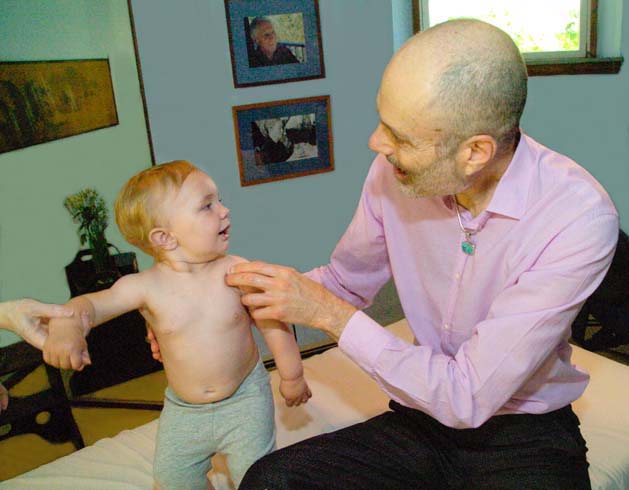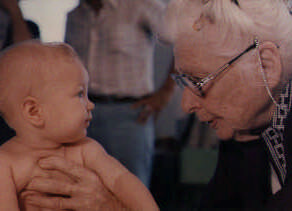
There is a mystical quality to the first years of life: we evolve and change so quickly. During this formative period, connective tissues are relatively soft. With Rolfing, a small amount of the right input can create opportunity for the body to become more organized and balanced.
Each of us, from the day we are born, is challenged by gravity. The spine may have exaggerated curves or scoliosis and the pelvis or shoulders may be uneven. The head may be forward or the belly protruded. We might wish to feel more graceful and grounded in our bodies. This kind of ease and stability arises from a balanced relationship with gravity.
How do babies and children develop structural imbalances?
In utero, the amniotic fluid mitigates some, but not all, of the effects of the earth’s gravitational field.
Some structural rotations develop in this early stage of life. Late in pregnancy the fetus often has knees bent up and positioned by the head, with the head off to one side. As pregnancy progresses, this compact and static position can create rotation (subtle or severe) in the fetal structure.
Once born, we respond to gravity throughout our lives. It is normal for babies, toddlers and children to experience physical injuries as they push their limits. Physical injuries (large or small) create pain and frequently result in myofascial shortening. The child ignores the pain and continues to strike out in the world, adapting its body to compensate. In response to pain, we hold the injured part rigid and favor the opposite side. Our movement patterns become altered and, over time, we develop shortenings in the soft tissue, which distort the structural pattern.
Emotional trauma also affects bodily structure.
A child who is yelled at or criticized constantly may hold his breath, raise his shoulders and lower his head protectively. Over time, this pattern becomes recorded in one’s physical structure; the neck and shoulder fascia shorten and thicken, “cementing” this physical relationship. This change in structure can ”lock in” the emotional injury as well. Feelings of embarrassment and inadequacy may become part of the child’s baseline emotional state.
Rolfing organises the body
In these formative years, babies and children develop patterns that may persist throughout life. With a small amount of input, Rolfing balances the tensions in the myofascial network. As the structure becomes better integrated, it becomes better organized in gravity. The improvements to posture, movement and self-confidence can be far reaching.
Doctor Rolf
Dr. Rolf recognized the power of Structural Integration with babies and children. Some of her young clients had curved spines, pigeon toes or flat feet, others had experienced birth trauma or childhood accidents. Remarkably, Dr. Rolf used Structural Integration to help address these and many other childhood problems.
For the past three decades, we have specialized in Rolfing infants, babies and children, including youngsters with orthopedic, developmental and neurologic challenges. It is my great honor to continue this aspect of Dr. Rolf’s work.

